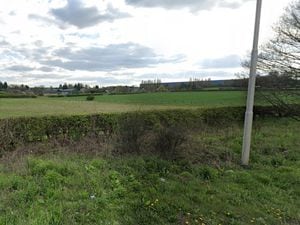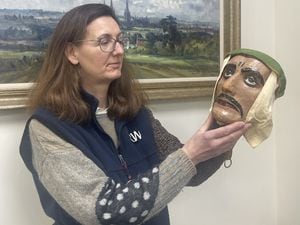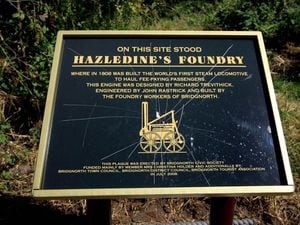Travel review: Skiing in Italy
If you've ever seen a cross-country skier from afar – a lone figure gliding along a flat, snow-blanketed field in the distance – what did you think?
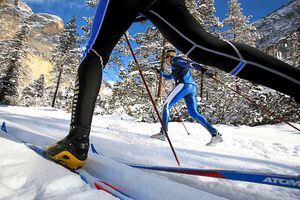
How serene it looks? How gentle? How – dare I say it – 'easy' compared to 'proper' skiing?
That's what I thought. Now, having actually tried it, I can categorically confess that I was wrong.
Serene and gentle, yes – once you've mastered it. But it certainly isn't easy. In fact, an hour into my first lesson with the charismatic Giorgio, at cross-country ski school Alta Badia in Italy's Dolomites region, my quads are burning and I'm totally out of breath.
"On your balls!" Giorgio cries, as me and my three classmates wobble along. "Stand on your balls!"
He means the balls of our feet, but I can't help giggling like a schoolgirl as Giorgio yells his instruction, the joke lost in translation (I know, so mature!) – and laughing does little to help my balance.
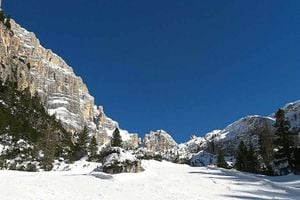
With cross-country skis – much lighter and narrower than downhill skis – the back of your boot isn't fixed in, so you can lift your heels to propel yourself forwards and glide, in a skating-like motion (hence the need to balance on the balls of your feet).
If you're not familiar, cross-country – also known as Nordic – skiing basically means using skis to cross snowy terrain. It traditionally provided a way of travelling over snow-covered landscapes faster than trudging on foot.
It has flourished as a sport in its own right and is becoming increasingly popular as a leisure activity.
Downhill and snowboarding may lead by quite a margin in terms of participation, but it's cross-country that's snowballing, growing at a greater rate than downhill, over the past few years.
It tends to attract a more mature crowd, and some of its plus points are obvious: you don't have to faff around with all those queues and lifts, it can be considerably cheaper (if you don't need a lift pass, for instance) and it's arguably safer, given that you're removing gravity from the equation, there's less speed and it's a far less crowded affair.
At the start of the lesson, Giorgio proudly declares that cross-country skiing is one of the best full-body workouts going. "It works all muscles," he says.
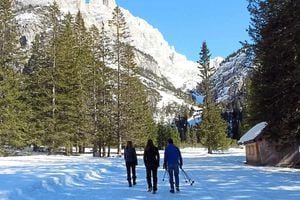
Super-lean, and glowing with a vitality that totally belies his middle-age years, he is a superb advert for his claim, and it doesn't take me long to see what he means. There's a lot of technique in downhill skiing, but in terms of physical graft, gravity does most of the work. That doesn't apply in cross-country. Instead, you're using your own momentum and body movements to push, pull and glide along the narrow tracks. Balance and core strength therefore play a big part, along with a good sense of co-ordination – and it is incredibly physical.
Giorgio breaks down the technique into single movements, and we practise them going round and round the ski school's circular track.
It might be flat but there are still a few tumbles. By the end of day one, however, we're already putting the movements together and – albeit in a slow, unsteady and clunky beginner's manner – almost doing it properly (that's another great thing about cross-country skiing; it might be hard work but it can be much quicker to learn).
I'm utterly knackered though. Thankfully, luxury awaits back at Hotel Rosa Alpina, conveniently located in the centre of San Cassiano, a peaceful and picturesque village a few miles away from the ski school.
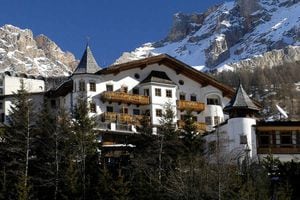
Owned and run by the same family for three generations, it promises 'local hospitality with an elegant, refined Alpine atmosphere' and more than delivers on all counts.
Its individually designed suites (mine has a huge mezzanine sleeping area, and one of the cosiest sofas I've ever had the pleasure of curling up on) are unquestionably five-star, along with food and wine to match, but it's relaxed and homely too – pure Alpine comfort with a classy twist.
As far as ski resorts go, San Cassiano isn't a buzzing party town, but if sophistication and gourmet food are what you're after, this is definitely worth adding to the wish list.
After chilling in the hotel spa, we dress and head for dinner at St. Hubertus, the two Michelin-star gourmet restaurant attached to Rosa Alpina, which, under the expert guidance of head chef Norbert Niederkofler, has flourished into quite the foodie destination in recent years.
We push the boat out with an 11-course tasting menu, where highlights include the lightest beetroot gnocchi in 'beer soil' and unspeakably delicious crispy suckling pig, with wine pairing. Back at ski school the next day, any excess calories are quickly burned off.
After a bit more work on the practice track, and learning how to stop (bending the knees and pushing one ski outwards in a plough-type motion), Giorgio decides we're ready to head out on one of the proper runs.
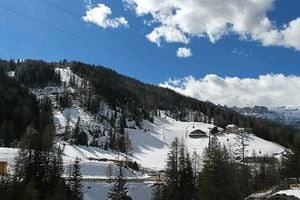
Alta Badia boasts 30km of cross-country routes, which track across twinkling open meadows and snake through gently undulating forest paths, the Dolomites' jutting peaks a mesmerising and dramatic backdrop. Cross-country skiing might not offer the rush and thrill of zooming downhill, but once you get going, you fall into a fun rhythm.
If you're feeling especially active, a more strenuous hike up to the frozen waterfalls of Armentarola is worth the effort. Carry on a little further up the hill and you'll reach Rifugio Scotoni Hutte, a refreshment stop that doubles as a clubhouse. We arrive to a live band belting out old-school rock 'n' roll and, impossible as it sounds with our knackered legs, can't resist joining the crowd for a boogie.
It's a fun end to an exhausted but oh-so rewarding trip. I leave with a new-found respect for cross-country, and – I hope – just a hint of Giorgio's rosy glow in my cheeks.
By Abi Jackson

